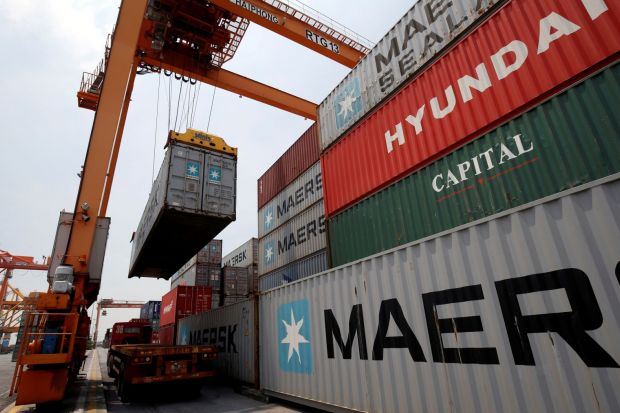Trade diversion to Asean-6 gathering pace: Citi
TRADE diversion into the Asean-6 economies — as a result of continuing tensions between the United States and China — gathered pace in the third quarter of 2019, Citi economists Kit Wei Zheng and Ang Kai Wei said in a Nov 10 research note.
Growing share
As evidence of trade diversion, the economists looked at changes in US import shares instead of absolute changes, as such changes in proportion can occur even if end demand softens.
Between the first half of 2018 and Q3 2019, China’s share of US imports on the US$250 billion tariff list fell 3.2 percentage points to 12.7 per cent. Over the same period, Asean-6’s share rose 1.1 percentage points to 6.3 per cent.
This increase has accelerated over time: initially rising from 5.19 per cent in H1 2018 to 5.33 per cent in H2 2018, then to 5.76 per cent in H1 2019, and jumping to 6.3 per cent in Q3 2019.
Broad-based or product-specific?
The nature of the trade diversion varied by market. Vietnam saw the largest change in US import share over the period, up 0.69 percentage point to 1.68 per cent, with these gains being broad-based. Increases in import share of over 1 percentage point were seen in the broad categories of wood, paper, rubber and plastics; machinery and electronics; “other manufactured goods”; and textile and footwear.
It was a different story in Thailand, the Philippines, and Myanmar, which saw the second- to fourth-largest gains respectively.
Thailand’s import share rose 0.23 percentage point to 1.69 per cent, with the gains narrowly centred on new pneumatic tires and automatic data processing storage units.
The Philippines, whose import share rose 0.08 percentage point to 0.5 per cent, saw gains in static converters, lamps, and communication apparatus.
Malaysia, with a 0.05 percentage point rise to 1.09 per cent, saw gains in broadcast receivers and oscilloscopes, as well as emerging areas such as paper-related products, glass-related products, and furniture.
The remaining two Asean-6 members, Singapore and Indonesia, saw less benefit. Although Singapore’s import share rose 0.05 percentage points to 0.73 per cent, this “was narrowly based on a specific beverage ingredient and orthopedic artificial parts, which may not be directly linked to trade diversion”, said the report. Indonesia’s import share edged up merely a marginal 0.01 percentage points to 0.64 per cent.
Pockets of tightness
Capacity constraints are not yet hindering trade diversion yet on aggregate, said the report. But it noted pockets of emerging capacity constraints, including:
- Some textile companies in Vietnam have been reported to be slowing or halting expansion due to land and labour shortages.
- US imports of printer parts from Malaysia are about half of those from China. Yet while China’s import share of printer parts fell 9 percentage points from June to September, Malaysia’s share rose just 1 percentage point, suggesting that capacity constraints may be binding.
Growth cushion
The Citi economists are upgrading their estimates of the growth cushion from trade diversion, now expecting trade diversion into Asia to be equivalent to about 6 per cent of China’s exports of tariff products to the US, up from a previous 4 per cent assumption.
If no capacity constraints are assumed, this could translate to a gross domestic product boost of 0.33 percentage points in Malaysia, and of 0.25 to 0.27 percentage points for Vietnam, Thailand, and Taiwan.
Adjusting for estimated capacity constraints, the boost would be 0.34 percentage points in Vietnam, 0.26 percentage points in the Philippines, and 0.12 to 0.19 percentage points for Singapore, Thailand, and Malaysia.


 Thailand
Thailand




